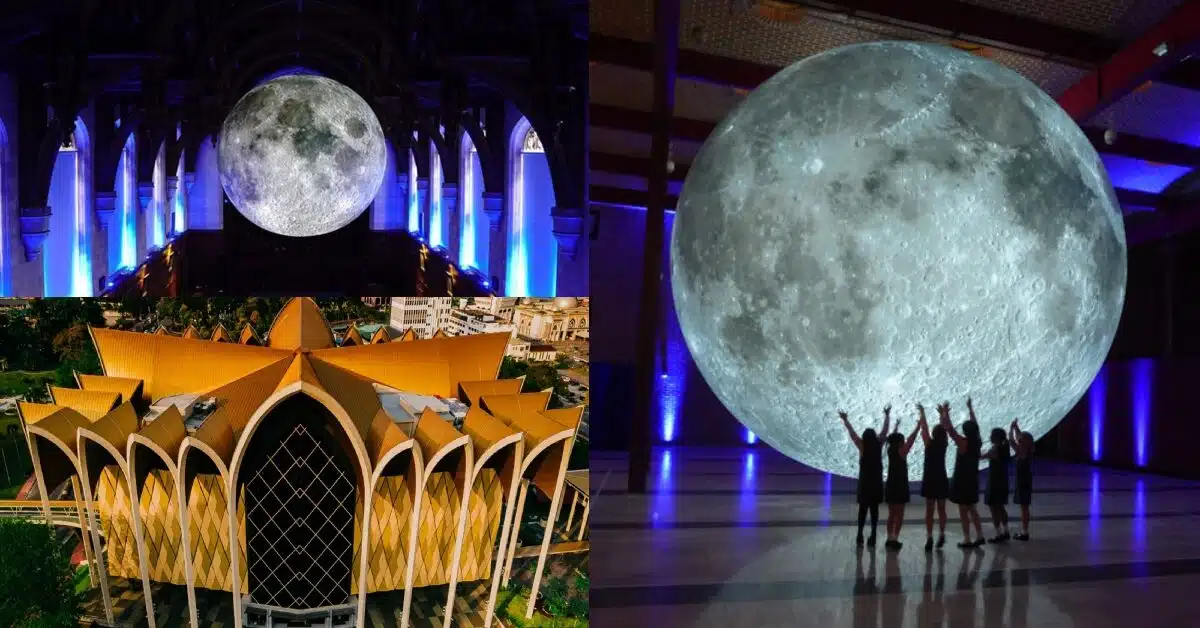Look Into the Fascinating Globe of Borneo's Cultural Heritage: A Comprehensive Overview to the Cultures Museum Experience
Immersing oneself in the intricate tapestry of Borneo's cultural heritage is similar to beginning on a voyage via time and practice. The blend of aboriginal tribes, conventional handicrafts, exciting efficiencies, and historic stories housed within the boundaries of the island's museums uses a peek into a globe including extensive heritages and lively customizeds. As visitors traverse with these repositories of society, they are beckoned to explore a world where past and existing intermingle, inviting reflection on the resilience and splendor of Borneo's varied heritage.
Native People of Borneo
Borneo is home to over 50 native people, each with special social practices and traditions that have actually been preserved for generations. Amongst these tribes are the Iban, known for their traditional longhouses and complex tattoos where multiple family members reside. The Dayak individuals, one more prominent team, take part in intricate spiritual ceremonies and are proficient artisans, crafting intricate wood makings and woven fabrics. The Penan tribe, on the various other hand, are nomadic hunter-gatherers with a deep link to the jungle, using blowpipes for hunting and gathering wild plants for food.
These aboriginal people play an essential function in keeping Borneo's rich cultural tapestry. Site visitors to Borneo have the possibility to involve themselves in the special way of lives of these people via cultural trips, homestays, and community-based tourist efforts.
Conventional Handicrafts and Artifacts

One noticeable example of standard inventions in Borneo is the manufacturing of woven goods - Borneo Cultures Museum. Skilled weavers utilize all-natural fibers like rattan, bamboo, and pandan delegates develop complex baskets, mats, and accessories embellished with vivid patterns that hold symbolic significances within the community
The art of woodcarving is another considerable facet of Borneo's conventional handicrafts. Craftsmens carve complex styles into numerous sorts of timber to generate masks, sculptures, and music instruments that not just offer functional functions however additionally hold social importance, frequently illustrating folklore or spiritual ideas.
Additionally, Borneo is renowned for its beadwork, with craftsmens diligently crafting grains from materials like glass, seeds, and coverings to produce fashion jewelry, garments embellishments, and attractive things that display the area's vivid aesthetic traditions. These typical handicrafts and artefacts not just function as concrete expressions of Borneo's cultural heritage yet likewise give insights into the neighborhoods' beliefs, values, and method of life.

Social Performances and Festivals
With a deep-rooted connection to their cultural practices, the neighborhoods in Borneo come alive with lively cultural performances and celebrations that celebrate their heritage. These occasions display the rich diversity of Borneo's ethnic teams, each offering special dancings, songs, and rituals that have actually been passed down through generations. One of one of the most distinguished celebrations is the Gawai Dayak, commemorated by the Dayak individuals to note the rice harvesting season. During this event, standard music loads the air, elaborate dancings are done, and fancy traditional outfits are useful site put on. One more considerable occasion is the Pesta Kaamatan, commemorated by the Kadazandusun community to appreciate for the rice harvest. This festival features cultural performances, including the Sumazau dance, and traditional sporting activities like the bamboo dance. Visitors to Borneo can submerse themselves in these celebrations, acquiring a deeper understanding of the region's cultural heritage and experiencing the warm friendliness of its individuals. Social performances and celebrations serve as a lively reminder of Borneo's abundant social tapestry and the importance of preserving these practices for future generations.
Historical Stories and Artifacts
Checking out the historic stories and artifacts of Borneo provides a fascinating glance right into the area's abundant past and cultural advancement. Borneo's historical tapestry is woven with diverse impacts, reflecting the interactions in between native people, Chinese traders, European colonizers, and Malay sultanates. The artefacts discovered in Borneo showcase this elaborate history, ranging from standard crafts like detailed beadwork and woodcarvings to archaeological treasures such as ancient ceramic and tools.
Among one of the most engaging aspects of Borneo's historical narratives is the conservation of dental traditions gave through generations. These tales supply understandings right into the ideas, personalizeds, and lives of Borneo's occupants throughout the centuries. Additionally, the artifacts unearthed from historical sites use substantial links to these stories, permitting visitors to witness the material culture of previous cultures firsthand.
Contemporary Cultural Preservation Efforts

Furthermore, curricula and cultural exchange tasks play an important function in elevating awareness about the importance of protecting Borneo's unique cultural heritage. By engaging schools, museums, and the broader neighborhood in discussions and tasks that commemorate Borneo's varied cultures, conservation initiatives can get momentum and support for long-term sustainability. Partnerships between governmental bodies, non-profit companies, and local communities are important in driving these conservation endeavors onward, guaranteeing that Borneo's rich social heritage remains vibrant and cherished for generations ahead.
Conclusion
To conclude, the cultural heritage of Borneo is rich and diverse, with native tribes, traditional inventions, social efficiencies, events, historical narratives, and modern preservation initiatives all adding to its individuality and significance. Site visitors to Borneo's cultural museums can gain a much deeper understanding useful source and appreciation of the region's cultural heritage, enabling an extra immersive and informing experience.
Submersing oneself in the detailed tapestry of Borneo's cultural heritage is comparable to getting started on a voyage with time and custom.With a deep-rooted link to their social traditions, the neighborhoods in Borneo come active with dynamic cultural performances and festivals that commemorate their heritage. Cultural efficiencies and celebrations offer as a vivid pointer of Borneo's abundant cultural tapestry and the relevance of preserving these traditions for future generations.
Furthermore, educational programs and cultural exchange tasks play a crucial role in raising awareness regarding the value of maintaining Borneo's one-of-a-kind social heritage. Cooperations between governmental bodies, non-profit companies, and neighborhood areas are important in driving these conservation undertakings onward, ensuring that Borneo's rich social heritage remains vivid and valued for generations to come.
Comments on “Look into Diversity: Borneo Cultures Museum Revealed”